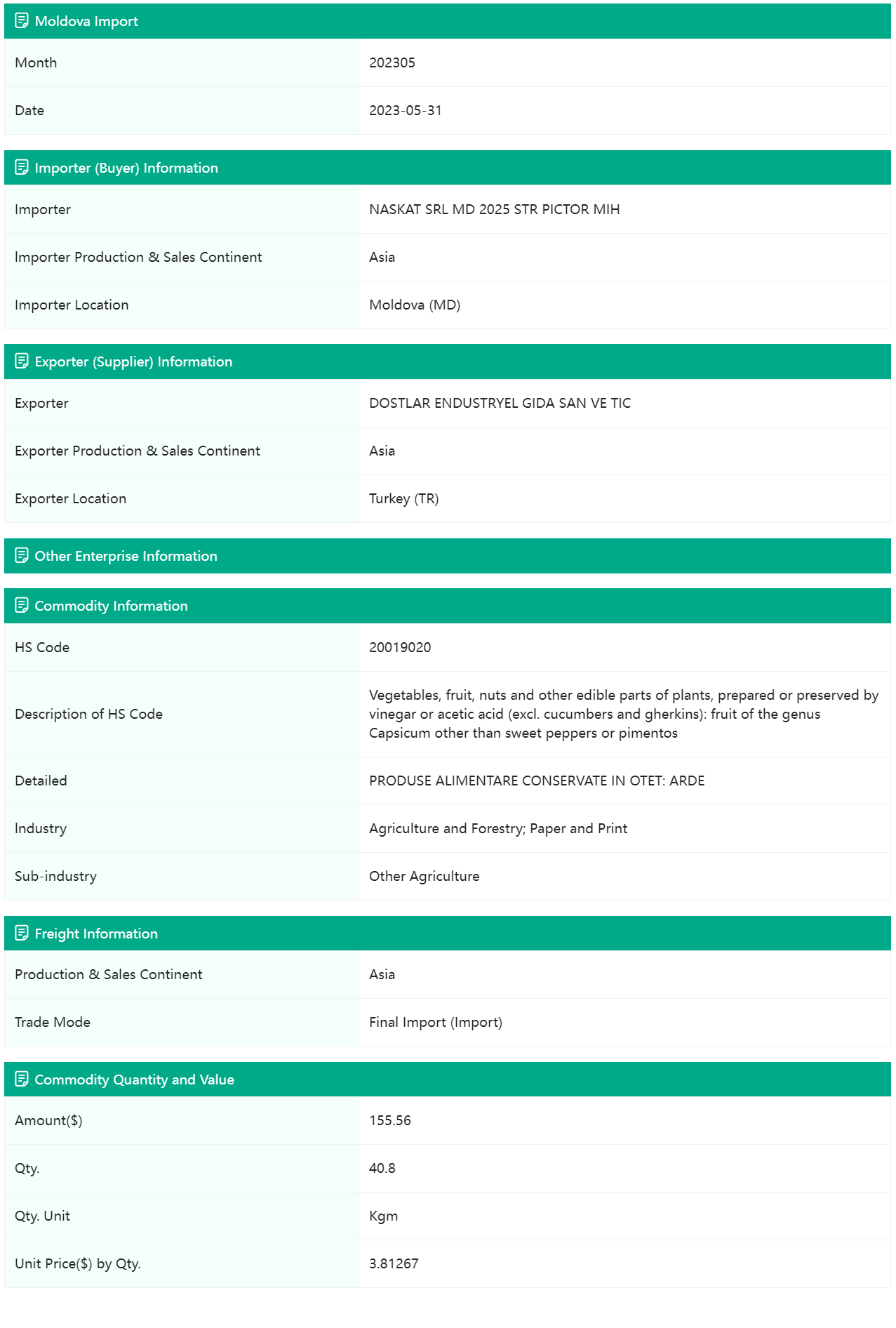Please Sign in to view recently saved searches.
Moldova is located in central Europe, bordered by Romania and Ukraine, with a land area of 33,800 square kilometers, mostly between the Prut and Dniester rivers.
Moldova has significant geographical advantages and diverse trade relationships. It benefits from trade preferences through mechanisms like the WTO, the Moldova-EU Free Trade Area, and the CIS Free Trade Area. Situated at the crossroads of Eastern and Western Europe, its capital is 140 kilometers east of the Ukrainian port of Odessa and 100 kilometers west of the Romanian (EU) border. Moldova offers convenient transportation, a favorable trade environment, and an average tariff rate of less than 5%. Under the Moldova-EU Deep and Comprehensive Free Trade Agreement, Moldovan products with a certificate of origin can enter the Eurasian market, including the CIS, EU, Central and Eastern Europe, and Turkey, tariff- and quota-free.
Although Moldova lacks energy resources and bulk minerals, it is rich in non-metallic ores such as marble, gypsum, glass sand, limestone, diatomaceous earth, and clay. Diatomaceous earth is particularly valuable. The country has fertile land in the Ukrainian Great Plains, featuring one of the world's three major black soil regions. With black calcium soil covering three-quarters of its area, Moldova has 7.5 acres of arable land per capita, boasting agricultural conditions superior to those of the Netherlands, a major European agricultural exporter.
The official language of Moldova is Moldovan, with Russian commonly used.
【Key Industries】
**Agriculture**
Eighty percent of Moldova's land is high-yield black soil, ideal for crops like grapes, sugar, cooking oil, and tobacco. Previously a key producer of fruits, berries, corn, sunflowers, and vegetables in the Soviet Union, Moldova’s main crops now include corn, winter wheat, barley, and rye. Cash crops like tobacco, sugar beets, soybeans, sunflowers, flax, and hemp are also prominent. Sunflowers are particularly important, especially in the southeast.
**Grape Cultivation and Winemaking**
Moldova has 122,000 hectares of vineyards, producing about 600,000 tons of wine annually, with 85% exported. There are 186 wine companies, including major producers like AO "CRICOVA" and Milestii Mici. In 2022, grape production reached 528,200 tons, with over 100,000 tons of fresh grapes harvested.
**Industry**
Most industries in Moldova are private or foreign-invested, focusing on agricultural processing, tobacco products, textiles, leather, and shoemaking. Key products include wine, beet sugar, chocolate, processed fruits and vegetables, and tobacco (primarily exported to the CIS). There are also significant clothing and footwear industries, mainly serving EU orders.
【Foreign Trade】
In 2022, Moldova's total goods exports reached USD 4.335 billion, a 37.9% increase from the previous year. Exports to the EU totaled USD 2.54 billion, up 32.3%, accounting for 58.6% of total exports. Exports to the CIS were USD 1.04 billion, more than double the previous year, making up 23.9% of total exports. The main export destinations include Romania, Ukraine, Italy, Turkey, Germany, Russia, and Bulgaria. Moldova's top trading partners are Romania, Ukraine, Turkey, Germany, and Russia.
Blooming Moldova customs data provides updated information on importers, exporters, commodities, freight, trade volumes, and prices, supporting business decision-making in Moldova's international trade landscape.
Are you exploring market opportunities in Moldova? Interested in expanding your presence or establishing mutually beneficial partnerships with local buyers?

Sample Data


Do you want to gain insights into your competitors' activities in the Moldovan market?
